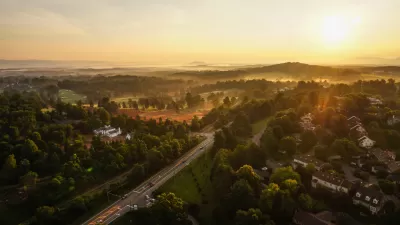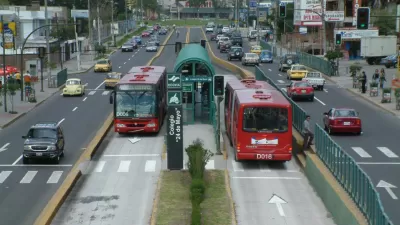As Cincinnati embarks on an effort to rewrite its building regulations, city leaders hope a form-based code will provide the tools necessary to revitalize its neighborhoods, writes Carrie Whitaker.
With an estimated 700 Cincinnatians participating in workshops last week to help design its new form-based code, the city's Department of Planning and Buildings is hoping they've found the right tool to revive a city that has half the population it did 60 years ago, and a 17 percent housing vacancy rate.
Following the lead of planners in Nashville, whose work with form-based codes has served as a precedent for leaders in Cincinnati, the city's effort will kick off in four of the city's neighborhoods: College Hill, Walnut Hills, Westwood and Madisonville, utilizing a $2.4 million Community Challenge Planning Grant from the U.S. Department of Housing and Urban Development.
Learn more about the project at the city's new Plan Build Live website.
FULL STORY: Cincinnati betting on new development code

Manufactured Crisis: Losing the Nation’s Largest Source of Unsubsidized Affordable Housing
Manufactured housing communities have long been an affordable housing option for millions of people living in the U.S., but that affordability is disappearing rapidly. How did we get here?

Americans May Be Stuck — But Why?
Americans are moving a lot less than they once did, and that is a problem. While Yoni Applebaum, in his highly-publicized article Stuck, gets the reasons badly wrong, it's still important to ask: why are we moving so much less than before?

Using Old Oil and Gas Wells for Green Energy Storage
Penn State researchers have found that repurposing abandoned oil and gas wells for geothermal-assisted compressed-air energy storage can boost efficiency, reduce environmental risks, and support clean energy and job transitions.

Updating LA’s Tree Rules Could Bring More Shade to Underserved Neighborhoods
A new USC study finds that relaxing Los Angeles’ outdated tree planting guidelines could significantly expand urban tree canopy and reduce shade disparities in lower-income neighborhoods, though infrastructure investments are also needed.

California's Canal Solar Projects Aim to Conserve Resources and Expand Clean Energy
California’s Project Nexus has begun generating electricity from solar panels installed over irrigation canals, with researchers and state agencies exploring statewide expansion to conserve water and boost clean energy production.

HHS Staff Cuts Gut Energy Assistance Program
The full staff of a federal program that distributes heating and cooling assistance for low-income families was laid off, jeopardizing the program’s operations.
Urban Design for Planners 1: Software Tools
This six-course series explores essential urban design concepts using open source software and equips planners with the tools they need to participate fully in the urban design process.
Planning for Universal Design
Learn the tools for implementing Universal Design in planning regulations.
Heyer Gruel & Associates PA
City of Moreno Valley
Institute for Housing and Urban Development Studies (IHS)
City of Grandview
Harvard GSD Executive Education
Salt Lake City
NYU Wagner Graduate School of Public Service
City of Cambridge, Maryland




























